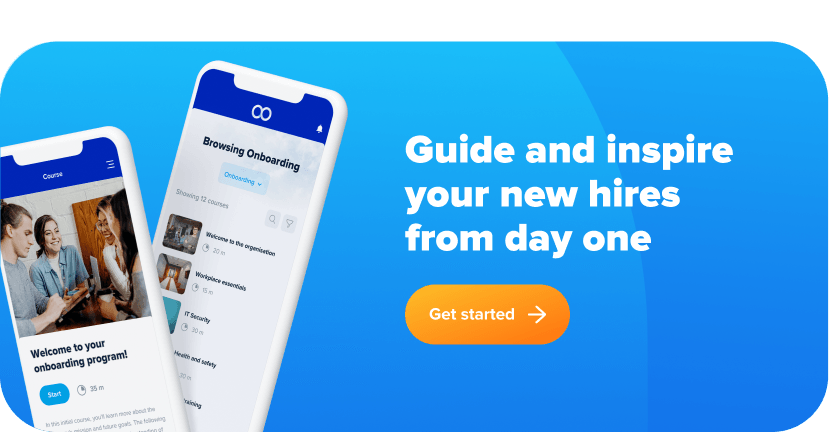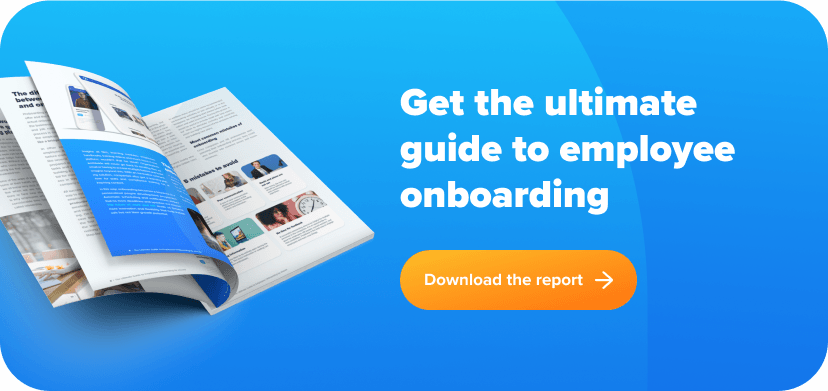The way HR professionals design successful onboarding for new employees is changing. To create an inclusive and human-centered organization we want to make our existing and new employees feel that they thrive and belong, that what they do is meaningful, and that they are productive and grow as individuals. This post gives you five new employee onboarding best practices that you may want to implement in your onboarding process to make new hires feel welcome and productive.
Companies Succeed With Onboarding Best Practices
The internet is full of long lists with onboarding tips and activities that make for a perfect employee onboarding process. These can be a helpful resource but often it is not a case of one size fits all. What might be an essential step for onboarding in one organization may not be as important for others, which means you need to be selective about the onboarding activities you choose to have in your organization.
In addition, since high employee retention is precious to most CHROs, it is critical that you use the onboarding process to create a strong cultural match between the new hire and the organization and that these strong bonds are created as quickly as possible. Add to this that it is critical for most organizations that the employee ramp up time leads to early productivity.
This means that the new employee onboarding best practices that your HR team chooses to adopt become even more important. These five onboarding best practices for new employees will help you create an honest and transparent relationship with new hires and help them grow quickly in their new roles.

5 New Employee Onboarding Best Practices
1. Preboarding
Very often employees are highly motivated to learn about their new job and their new organization even before they have their first day at work. When you provide information to the new hire prior to their starting date it increases engagement and prepares the employee for the new job.

This preboarding can include topics such as the company’s location, background, mission and vision, strategy, values and culture, organization, social activities, and compliance procedures as well as the new hire’s team and job responsibilities.
Establishing a smooth preboarding practice through e-learning in a modern LMS (Learning Management Systems) is an onboarding best practice that will make for a great start of the employee experience. It can also help the new employee get a solid kickoff even before they start in their new job!
2. Blended Learning
E-learning is a must-have among your best practices for onboarding new employees. E-learning is not only an effective way to deliver the company introduction, compliance training, and job role training in the preboarding stage but is also a practical tool during the entire onboarding process. Online training and information are an efficient and flexible way for the individual to consume the learning at their own pace, and real time reporting makes it easy for HR’s onboarding team to follow the learning progress of the new employees.
To create the optimal learning environment for the new employee, e-learning can be combined with classroom training to create a blended learning experience. This creates a smooth process for both HR, the manager and the employee and offers an opportunity to discuss and process learning they have retained through the e-learning modules. It also helps the new team member to easily become part of the organization and culture.
3. Interactive Systems
The amount of information that the new hires are expected to digest throughout the onboarding time can be vast. This means that innovative HR professionals will always try to create a personalized learning situation for the new employee that is as simple and effective as possible. One best practice for new employee onboarding involves the use of interactive elements to improve information retention and employee experience. When you use media, gamification, and quizzes in your onboarding e-learning it becomes more engaging. Using an e-learning authoring tool, like eloomi Authoring, to create videos, podcasts and quizzes make the learning more captivating and interactive.
There are also other ways to put interaction on your onboarding best practices checklist. As an example, interaction can include arranging for the group of new hires in a specific month to meet face to face to share perspectives and discuss what they have learned. The employee can also play an active role in shaping the individual’s own job description. Instead of HR and the manager communicating expectations on-way, the employee can be an active contributor in aligning expectations by making it more of a conversation.
When you use media, gamification, and quizzes in your onboarding e-learning it becomes more engaging.

4. Cultural Adaption
Making the new team member experience your organization’s culture first-hand from the very beginning of their employment creates the foundation for a strong employer-employee relationship glued together by values. All the preboarding and onboarding e-learning and other activities each carry elements of your company culture that the new employee gradually adopts and becomes part of. For example, when you invite your new employees to give feedback in their e-learning, you clearly promote feedback as part of your culture from the start and invite the new hire to embrace this value.
Preboarding and onboarding training are not the only means of introducing your culture to new employees. Additional elements such as team introductions, assigning a buddy, social activities, and practicing new job skills together with other new employees can create inclusion and psychological safety that help the new hires to find their role and become active contributors to your culture.

5. Comprehensive Employee Resources
Although onboarding is an individual stage and discipline to master for HR, onboarding in the eyes of the employee is by no means disconnected from the rest of the employee journey. In reality, onboarding is the beginning of the new employee’s development with the company and has a pivotal impact on employee engagement and retention which is why you want to get it right for your organization.
With this perspective, it becomes natural to focus on onboarding as the first step in the employee’s learning. With an up to date learning software, new employee onboarding best practices become easier to implement. You can create automated learning paths including online and onsite skills and compliance training that supports the entire employee journey. With eloomi’s onboarding and people development solution, you can even connect the training capability with 360 feedback, flexible performance and development conversations, and personal goals and coaching.
Implement These Onboarding Best Practices for New Employees in Your Company
As you probably noticed, eloomi offers an award-winning people development SaaS (Software-as-a-Service) that can help you easily design and deliver your own ideal onboarding practice. With eloomi’s SaaS, onboarding best practices for new employees become easy to implement in your onboarding program.
If you want more inspiration, you can read how Mountain High Resort has switched their face-to face onboarding and training to an LMS that supports their fully digital on-boarding & training.







